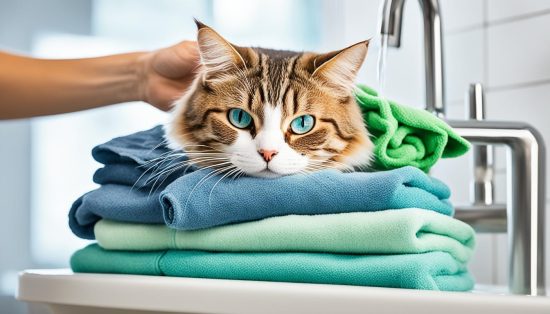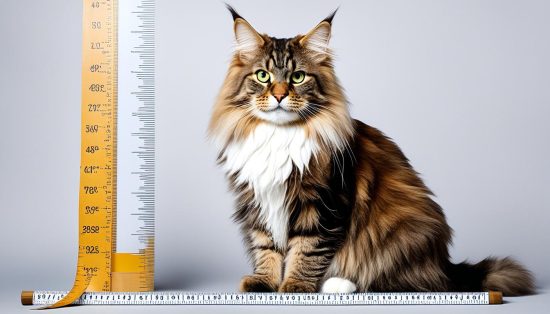How to Give a Cat a Pill: A Stress-Free Guide
How to give a cat a pill: Straightforward tips for stress-free pilling, including mastering the art of opening your cat’s mouth safely and techniques like crushing pills or using a pill shooter.
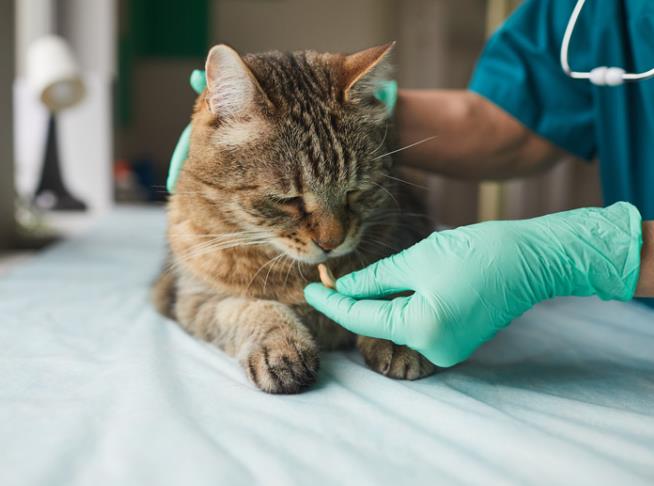
Did you know that a staggering 70% of cat owners struggle to give their feline friends the necessary medication? Getting a cat to do anything unwillingly is a challenge few owners look forward to. Wondering how to give a cat a pill? We’ve got you covered. Giving a cat a pill is one of those tasks cat owners keep their fingers crossed they won’t have to do too often.
It’s not as easy as it sounds: there are claws and teeth you need to stay clear of, and cats are experts at spitting out pills. This guide provides straightforward tips for stress-free pilling, including mastering the art of opening your cat’s mouth safely and techniques like crushing pills or using a pill shooter. Whether your cat is cooperative or stubborn, the goal is to minimize stress for both you and your feline friend when administering essential medication.
Understanding Why Cats Might Need Pills
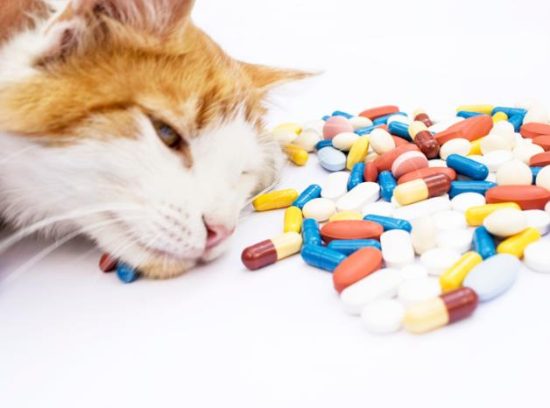
Cats, like humans, can suffer from various health issues that require medication, such as infections, chronic conditions, or post-surgery recovery. These medications are essential to minimizing their symptoms and restoring them to good health. While the prospect of giving a cat a pill may seem daunting, understanding the reasons behind their need for medication can help pet owners approach this task with empathy and care.
Common Feline Health Issues Requiring Medication
Cats can experience a range of health problems, from upper respiratory infections to gastrointestinal issues, that may necessitate the use of prescribed medications. These medications help alleviate the cat’s discomfort, prevent the condition from worsening, and promote a speedy recovery. Recognizing that cats don’t enjoy taking pills but require them for their well-being can motivate pet owners to find the most effective and stress-free methods for administering these essential treatments.
Importance of Following Vet’s Instructions
Before administering any medication to your cat, it’s crucial to check with your veterinarian for any restrictions on how the medication should be given. Certain pills can be mixed with food, while others must not be. Some pills can be crushed or divided, but others cannot as this could risk damaging your cat’s esophagus or stomach. Knowing this information can help you decide on the best way to give your cat the tablet and ensure the medication is effective. Careful adherence to the veterinarian’s guidance is essential for your cat’s health and safety when it comes to administering pills or other forms of medication.
Preparing Your Cat for Pilling
Proper preparation is the foundation of success when it comes to giving your cat a pill. Choose a quiet, familiar space for your cat’s pilling procedure, away from distractions and loud noises. Dim the lights if possible to help your cat feel as relaxed as possible.
Before introducing the pill, offer your cat some tasty treats, pets, and gentle praise. This creates a positive association with the process. Reward their cooperation with treats both during and after the pill administration. Approach your cat calmly and gently. Allow them to sniff and investigate the pill dispenser. Spend some time petting and reassuring them to make them feel comfortable with your presence.
How to Give a Cat a Pill?
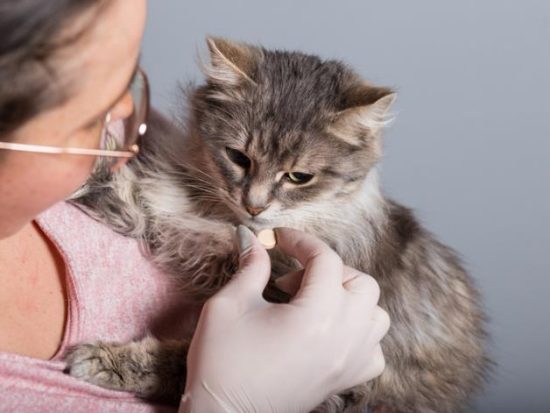
Depending on the type of medication, you can easily give a pill to your cat by hiding it in food, such as wet cat food, a bit of tuna, or a treat. Make sure it’s a small amount so they’re bound to eat it. If the vet advises that mixing the medication with food is possible, another way to deliver the medication is in powder form mixed in with a small portion of their usual diet or with a little water. Use a pill-crusher device to make sure the dosage stays the same.
Using a Pill Popper
A pill popper, also known as a pill gun or pill shooter, is a handy tool that can make administering pills to your cat much easier. This device allows you to place the pill in the end and then gently insert it into your cat’s mouth, depositing the medication directly on the back of their tongue. This method can be especially helpful for cats that are particularly stubborn or resistant to having a pill placed in their mouth manually.
Hiding the Pill in Food
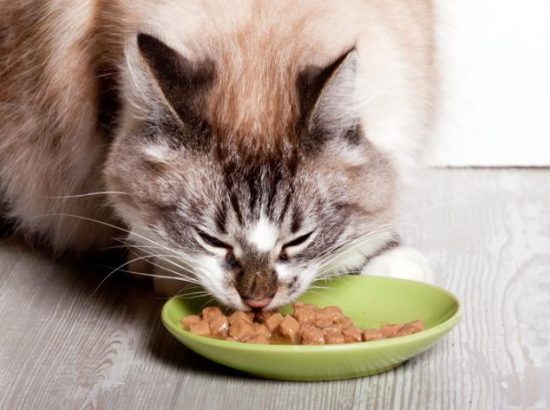
Hiding a pill in your cat’s food is one of the easiest and most stress-free ways to give them medication. The key is to use a small amount of a highly palatable food, such as wet cat food, tuna, or a favorite treat, and carefully conceal the pill inside. This method works best for cats that readily accept their regular meals and don’t tend to notice or refuse food with added medication.
Crushing the Pill and Mixing with Food
If your veterinarian approves, you can also crush the pill into a fine powder and mix it into a small portion of your cat’s food. This approach is useful for cats that are hesitant to eat anything with a whole pill hidden inside. Just be sure to use a pill crusher or mortar and pestle to ensure the proper dosage is maintained when the medication is mixed with the food.
Asking for Alternative Medication Forms
For cats that won’t accept a pill in any shape or form, some medication is also available in other forms such as oral liquids or veterinary injections. It’s always worth asking your vet what alternatives are available, as this can make the process of administering medication much easier and less stressful for both you and your feline friend.
How to Give a Cat a Pill by Hand
If all else fails, you can try to give your cat a pill by hand. Place your cat on a flat, stable surface such as the floor or a tabletop, and it can be helpful to put down a towel to stop them from slipping. This approach can be especially useful for how do you pill a stubborn cat or how do you pill a cat solo.
Preparing the Right Surface and Position
To give the pill, this will be easier from behind or next to your cat. Having a second pair of hands can be very helpful, but is not essential. You want your cat to be facing away from you as this will make it easier to restrain their legs or any other movement they might use to try and escape your grasp.
Securing Your Cat Safely
Proper positioning and restraint is crucial when trying to how do i get my cat to open his mouth for a pill. By having your cat face away from you, you can more easily control their movements and keep them calm during the process.
Use your index finger to place the pill in the middle of their tongue, as far back as you can. Close your cat’s mouth, gently rub their throat for a few seconds and then return their head to a normal position and wait for them to lick their lips as they swallow. This technique can be especially helpful for how do you pill a cat with one hand.
Checking for Successful Swallowing
After administering the pill, watch your cat closely to ensure they have successfully swallowed it. You may need to gently rub their throat again if they appear to be holding the pill in their mouth.
Reward your cat with their favorite treats and toys after successfully administering the pill. This positive reinforcement will help make the experience less stressful for your feline friend.
Alternatives to Pilling for Cats
For cats that won’t accept a pill in any shape or form, there are alternative medication options available that can be easier to administer. Liquid medications designed specifically for cats can be an easier alternative to pills in some cases. Additionally, injectable medications administered by a veterinarian may be an option for cats that are particularly resistant to oral medications.
Liquid Medications
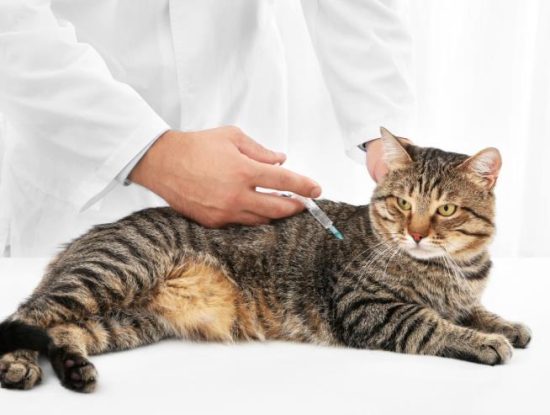
Liquid medications can sometimes be a more palatable option for cats that have difficulty swallowing pills. These formulations are designed to be easily administered directly into the cat’s mouth or even dissolved in water to be given with the cat’s food. This can be a more stress-free approach compared to trying to get a cat to swallow a solid pill.
Injectable Medications
For cats that are extremely uncooperative with oral medications, injectable medications administered by a veterinarian may be an alternative worth considering. This method eliminates the need for the cat to ingest a pill or liquid. It can be a viable option for cats that are particularly resistant to other forms of medication administration.
Practicing Patience and Positive Reinforcement
Patience and minimal restraint are essential when giving your cat a pill by yourself. Forcing anything can lead to anxiety and resistance. What annoys a cat the most is being forced to do something against their will, so it’s crucial to approach the situation calmly and with understanding.
Continue offering praise and treats to your cat throughout the pilling process as needed. Reward small successes to keep your cat motivated. Positive reinforcement can help your cat associate pill-taking with good things and keep them calm. Cats, like humans, can be stubborn, but with patience and a gentle approach, you can get them to cooperate.
If you or your cat are getting stressed, stop and give them a few treats, gently stroke, and soothe them before trying again. Remember, cats dislike pills, so it’s important to make the experience as positive as possible to avoid future resistance.
FAQs on giving a cat a Pill
Is it okay to crush pills for cats?
Before crushing any pills, check with your veterinarian. Certain pills can be crushed and mixed with cat food, while others should not be, as this could risk damaging your cat’s esophagus or stomach.
Can you dissolve a pill to give it to a cat?
Yes, you can dissolve some medications in a small amount of water or mix them with a little wet food to make them easier to administer. However, check with your vet first to ensure the pill can be dissolved without affecting the medication.
Why is it so hard to pill a cat?
Giving a cat a pill is challenging because cats have teeth and claws that you need to stay clear of, and they are experts at spitting out pills. Cats can also become stressed and uncooperative during the process.
How do you pill a stubborn cat?
Try wrapping your cat’s body and legs in a towel, leaving only their head exposed. This can help to safely restrain a stubborn cat. You can also ask another person to hold your cat while you administer the pill.
What is the best pill shooter for cats?
There are various pill shooters or pilling devices designed specifically for cats. These can be a helpful tool to deliver the medication quickly and safely. Consult your veterinarian for recommendations on the best pill shooter for your cat.
Is it easier to give a cat a pill or liquid?
Liquid medications designed specifically for cats can be an easier alternative to pills in some cases. The liquid form may be more readily accepted by your cat compared to a solid pill.
Do cats hate pills?
Most cats do not enjoy having to take pills, as it can be a stressful experience for them. However, with the right approach and techniques, you can minimize their discomfort and make the process as stress-free as possible.
How do you pill a cat by yourself?
To pill a cat by yourself, place them on a flat, stable surface like the floor or a tabletop. Have your cat facing away from you and use your index finger to place the pill as far back on their tongue as possible. Close their mouth and gently rub their throat for a few seconds until they swallow.
Can I dissolve my cat’s pill in water?
Yes, you can dissolve some medications in a small amount of water or mix them with a little wet food to make them easier to administer. However, check with your veterinarian first to ensure the pill can be dissolved without affecting the medication.
How do you crush pills for cats?
Use a pill-crusher device to crush the medication into a fine powder, which can then be mixed with a small portion of your cat’s food or a little water. This makes it easier to administer the full dosage.


